
Mr. Antonio Esparza: Young But Definitely Making It
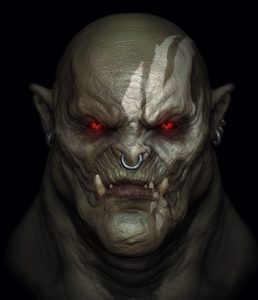 Mr. Antonio Esparza may have just started over a year in ZBrush, but that doesn’t mean he is completely green.
Mr. Antonio Esparza may have just started over a year in ZBrush, but that doesn’t mean he is completely green.
Indeed, though relatively young in the software, he is proving to know the ropes and making good in the discipline. His works is a clear testament to that.
But what we really admire about him is his relentless pursuit to become better. His honesty is refreshing against the backdrop of a world saturated by achievements brandished across social media. He is honest about being envious and wanting to be like his influences. And is there anything wrong with that? Nothing.
For what it’s worth, he inspires us to exert greater effort. He inspires us to be like a young man in a pursuit–and this makes us feel young.
Here, let’s take a look at Mr. Esparza’s experiences and learn a thing or two about how to turn desires to genuine passions.
Zbrush definitely changed the ballgame for 3D artists. When you first got involved with it, what did you have to learn to be skilled with the software?
I started using ZBrush nearly 1 year ago. During my career (Design and development of video games), we had a 4-month class using ZBrush where I learnt the basics of the program. There I focused on doing the high res of a previous model done in 3ds Max.
Apart from that, I taught myself via online tutorials. I did a lot of bust-work with and without references–always trying to improve my skills with proportions, anatomy, and design. I also did anatomy poses, different characters in 2 or 3 days, numerous props for college where I learned how surfaces from hard edges work and how to improve my retopology skills. Of course, asking feedback from professionals of the industry is key. That is the fastest way to improve and to correct your own mistakes.
Xeno Creatives (XC): Did ZBrush help you to be better at your art?
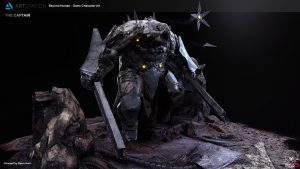 Antonio Esparza (AE): Totally, it gave me the tools to better express my art and ideas, like no other program had.
Antonio Esparza (AE): Totally, it gave me the tools to better express my art and ideas, like no other program had.
XC: When did you decide that ZBrush will be your main tool for 3D creation? How did it come about? Do you want to expand to other software or do you want to just focus on it?
AE: When I first discovered it, I paid little to no attention to it because I was focused on 2D Concept art and game design. It was later, while doing my Final Project in school that I found the magic of ZBrush. I realized that this program could help me a lot–even a lot more than I expected. It helped me infuse life to my characters and build better 2D content.
I want to focus on Character Design, so there are a several programs I want to master and include in my workflow to improve my work further: Render, Matte-painting, and Mari apart from the continuous practice of drawing and 3D sculpture.
XC: What other media did you use before ZBrush?
AE: I started with Photoshop doing both character and level design. Lots of 3Ds Max (where I started enjoying 3D). I also touched some C# for Unity doing 2D and 3D projects for college.
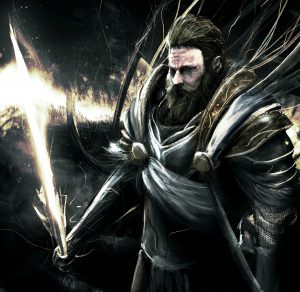 XC: Is it necessary to be good at human anatomy when working with ZBrush?
XC: Is it necessary to be good at human anatomy when working with ZBrush?
AE: Absolutely. It is not necessary to be an expert in anatomy to be able to work through ZBrush, but it is important to understand and know it because it will help you a lot when building characters. It’s essential to keep on improving and learning. I still learn on a daily basis and I think I will do it the rest of my life.
XC: Was your art a real passion from the beginning or just a job to you?
AE: It’s not a passion, it’s a lifestyle. Seeing polygons while walking on the city, from cars, people, noticing the reflection of the light in your friend’s skin.
You can dream about lost worlds, lost civilizations, with far planets and dark galaxies and how to make them real in a picture or a 3D model.
XC: Do you see yourself working in the movie and television industry?
AE: Yes. One of my biggest dreams is to build content for movies and T.V. shows as a modeler or character designer.
XC: Your works online are, hands down, AWESOME. They’re Ultra-Male, dark and exciting. The concepts are just cool. Do you have any favorite works? What are they and why?
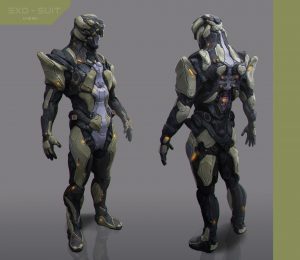 AE: I don’t really have favorite Works, but to be honest there are 2 that helped me feel noticed, because they were my first step to becoming a professional. They are “Miguel Villalobos” where I did the full range of character design (Story/Concept/Sculpt/Texture/Presentation) and the “Exo Suit U-13” where I mixed 3D and 2D to show the character.
AE: I don’t really have favorite Works, but to be honest there are 2 that helped me feel noticed, because they were my first step to becoming a professional. They are “Miguel Villalobos” where I did the full range of character design (Story/Concept/Sculpt/Texture/Presentation) and the “Exo Suit U-13” where I mixed 3D and 2D to show the character.
XC: Who do you consider as your influences? What did you like about them?
AE: My principal references are Anthony Jones, Milan Nikolic, Keita Okada, Wei Wang, Abner Marin, Vitaly Bulgarov, David Muñoz, Yin Zhen Chu among others. What I love most about them is the ability to make incredible characters so different between them, and their capacity to make images that make me envious and desperate to be better. But also, they make me want to keep working and do the best in my work.
XC: What other pieces do you still want to create?
AE: I’d love to make some characters for a long story I have in mind, based on the books of Orson Scott Card, alien worlds, and time travel. Everything for real time engines.
XC: Do you see yourself engaged in Game Character Design as well?
AE: My dream is to be able to do the full spectrum of workflow in a big company with an original IP, from the first idea, concepts, sculpt, texture to the end.
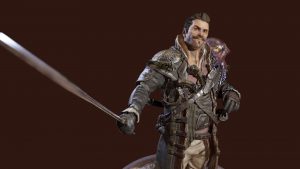 XC: If you weren’t doing what you’re doing now, what could you possibly be specializing in instead?
XC: If you weren’t doing what you’re doing now, what could you possibly be specializing in instead?
AE: I would have been doing Game Design, or maybe Mechanics Programming. Coding is something I love to think about, but I’m terrible with written vocabulary.
XC: What advice or message can you give individuals wanting to enter the craft/industry?
AE: A lot of people ask me how I achieved the skill I have in so little time. We often think about that tutorial, or the workflow that is going to give us a masterpiece in 2 days, or that is the key to land a dream job in 1 month.
But no. This field requires a lot of dedication and demands to be on the edge of innovation. So I say: “Stop whining and start working”. Invest all the time you can, practice and promote the student-professional integration of your zone. And above all, get around people that are interested in the same things than you, in your city or in another part of the world.
Yes Mr. Esparza, to be good at something requires that we just carry on working. And that, we shall do. Look at just how inspiring Mr. Esparza’s works turned out!
Want to see more of his amazing projects? Click here!

